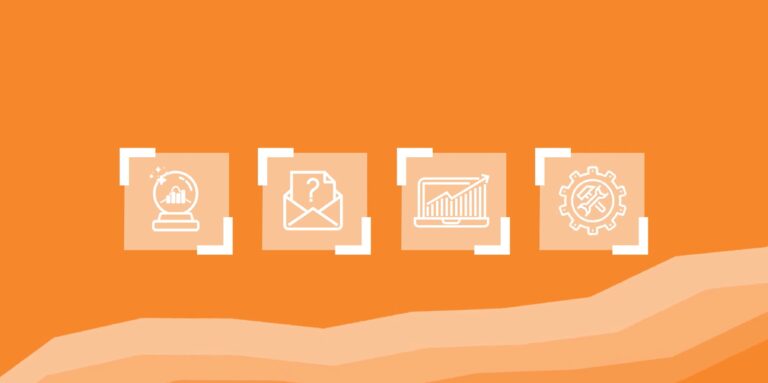Tableau has released the new version of its Business Intelligence (BI) platform. Version 2021.1 comes with new features. The most notable is, without a doubt, the far-reaching integration of Salesforce’s Einstein Discovery, which brings data science techniques to the business user without technical knowledge. The capability is called business science.
Tableau wants to help people see and understand data. To do this, it turns data into visual presentations, such as maps and graphs. In this way, companies can better respond to important issues and opportunities. According to Tableau, this can only be achieved when analytics is widely deployed within the organisation. Employees who can handle data, data culture and the right tools contribute to this broad deployment.
The need to further simplify data rapidly increases
Tableau’s Chief Technology Officer Andrew Beers emphasises Tableau has been working on simplifying data for quite some time. However, the need for further simplification is rapidly increasing, Beers observes. Because of the corona pandemic, solving problems with the right context based on data seems more important. As a result, regular employees try to use complex tools from data scientists or ask data scientists with overfull schedules for help. It does not always lead to the desired result.
Also read: Einstein Analytics and Tableau form a single powerful solution
Smart decision making
To address this, Tableau introduces business science. Beers calls it “a new class of AI-powered analytics that brings data science techniques to the people on the business side”. Thus, these employees become less dependent on data experts and can make faster and more intelligent decisions based on information provided by Tableau.
Beers also gives an example of what business science can mean for businesses. For example, corona vaccines require very accurate models for research and development. Models must show when a vaccine is effective. Data scientists can really demonstrate their added value here by using R or Python to build accurate cases into the model. In the vaccine chain, business science then tackles the data work that, in theory, employees need less technical knowledge for. For example, business science can help with the distribution of vaccines so that people actually get their shot.
Business science brings data science to the business user
The new Tableau feature can be used for all kinds of process optimisations. For example, business science will be useful for improving supply chain efficiency, forecast purchases, and maximise the delivery of goods and services. Making data science more accessible also has the advantage of bringing it directly to business users with their own specialisations. They have deep knowledge about the supply chain, for example, and can make better decisions because building models becomes more accessible, discovering insights simplifies, and taking actions based on predictions gets easier. The data scientists then deal with extending/scaling models using R and/or Python and API extensions.
Also read: Anyone can automate with MuleSoft Composer for Salesforce
Einstein Discovery in Tableau
The idea is to really bring data science to regular employees. The question then becomes how exactly Tableau intends to accomplish this. For this, it deploys a far-reaching integration with Salesforce’s Einstein Discovery. “Einstein Discovery is a supervised machine learning, designed to observe the many business problems. If you have specific metrics or Key Performance Indicators (KPIs) that you want to maximise or minimise or influence a yes/no variable, you can build modelling capabilities around those problems,” Beers explains. By deploying Einstein Discovery in Tableau, the service should become more widely available, leading to more predictions and recommendations based on data.
The far-reaching integration with Einstein Discovery makes data more accessible
Beers explains there are basically three ways users will notice it. First, predictive models built in Einstein Discovery can be accessed through the Tableau language to write specific calculations, such as “use this model to predict the data in this particular dashboard”. Secondly, the feature promises to offer a lot of interaction, so the user understands what is happening on the dashboard. Beers mentions as examples displaying predictions, why the predictions were made and showing recommendations to influence the predicted future. Thirdly, there is the possibility of bringing models together for bulk data scraping, creating a new dataset that uses the models users have built.
Also read: Digital consumer turns the world of business on its head
Certain groups make moves
Business science should bring data science to everyone. Business users without technical knowledge can build the models they want without coding. Instead, they put together a model using a click system. If the model still requires some extra accuracy, for example, because the model has to be very precise, the data scientist can help. Tableau sees a win-win situation in this respect. Data scientists often have overfull schedules that prevent them from doing all their work; a simplification can reduce this pressure. This while the regular business user can make more data-driven decisions.
However, the feature is only available to customers who use both Salesforce and Tableau. Salesforce is Tableau’s parent, so they regularly come up with product innovations together. Many organisations can benefit from this, as a combination of both solutions is common practice. But some companies combine Tableau with other CRM. They, therefore, do not benefit from the joint approach. However, these users can look forward to Tableau 2021.1 innovations that they can put to use. In addition to business science, the new release includes even more new features. However, it should be clear that the ambition of Tableau and Salesforce to simplify data science is great.
